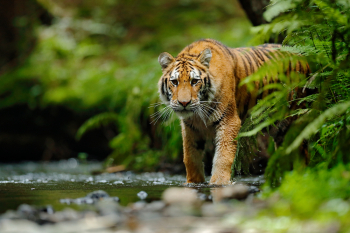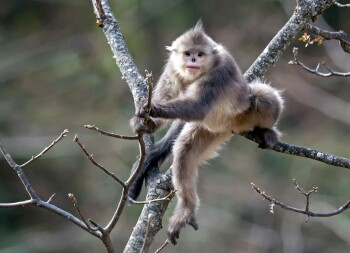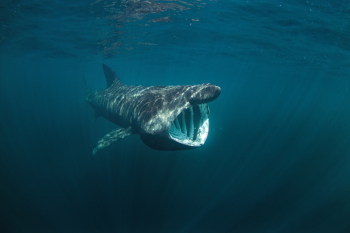Environment: Endangered Species
An endangered species is a species of animal or plant that is seriously at risk of extinction. The International Union for Conservation of Nature (IUCN), an organization funded by the European Commission, is regarded as a global authority on the world’s living species and maintains a list of the world’s endangered species. More than 8,000 scientists from 162 countries make up the IUCN’s Species Survival Commission, which designates as “threatened” any species falling within the critically endangered, endangered, and vulnerable categories. These species are assigned categories based on the level of extinction risk. Identifying a species as threatened and assigning it to one of the related categories is a complicated process, involving the analysis of multiple interconnected variables. These include population size, geographic range, and the number of breeding adults.
Risk Factors
Population Size
There are a variety of factors that put these plants and animals at risk. Most species placed on endangered lists have very small populations with a small number of breeding adults. In addition to being a problem in its own right, this can lead to a loss of genetic variation among species, since small populations of animals are forced to inbreed. The young are subsequently left vulnerable to disease and often fail to reach maturity.
Habitat
Habitat can also be a risk factor. From the clear-cutting of the Amazon rainforest for the purpose of grazing cattle to overhunting and overfishing, living species are under increasing strain in the modern world. When humans build homes, office buildings, and fun parks, preserving space for plants and animals is frequently not a priority. Loss of habitat creates a ripple effect, with animals often deprived of shelter and primary food sources that end up placing them in a vulnerable state.
Range
A plant or animal's range is a function of its habitat and is also used to assess a population's survival risks.
Environmental Factors
Finally, environmental factors such as pollution, a changing global climate, and increasingly extreme weather events are other factors placing a strain on the world’s plants and animals. Before a plant or animal is considered endangered, these factors are taken into consideration. Awareness of the problem leads to a search for solutions—and some measures are being enacted—although current trends suggest that the number of endangered species will only increase as time goes on.
China’s Threatened Species
Note: Numbers reflect current estimates and may vary by source.
Top Three Endangered Mammals of China
Altai Weasel (aka Mountain Weasel or Pale Weasel)
This nocturnal mammal lives in mountainous areas or highland steppes that are usually 3,500 meters (11,483 feet) or higher. It tends to nest in rock crevices or among tree roots, sometimes inhabiting burrows of other species that were hunted for food. One of the main factors leading to the weasel’s endangered status is human development that leads to a change or loss of the weasel’s habitat. Another issue is overgrazing by animals including cattle, sheep, and goats which reduces the availability of weasel prey, among them rodents and lizards.

Amur Tiger (aka Siberian Tiger)
This species of tiger is the largest in the world, found in northeast China along the Russian border. Amur tigers are now a protected species in China as well as in Russia, and although the cat has few known predators, human activity is the main reason for their decline. Loss of habitat from deforestation as well as poaching (illegal hunting) are the top factors leading to their endangered status. Another issue is the fact that traditional Chinese medicine has used tiger parts for hundreds of years, and illegal trade in the parts continues. Hunting of the tigers’ prey, which is primarily ungulates—particularly sheep, goat, deer, and pig—also impacts the tigers’ survival.
Anhui Musk Deer
This species of musk deer is native to the Dabie Mountains in China’s Anhui province. Male musk deer, including the Anhui species, have a gland in the abdomen that produces musk to attract females. The strong smelling, waxy substance is also used in making perfume and medicine. (Traditional Chinese medicine is heavily reliant on animal parts, and the demand for these products increases with increasing population numbers.) The species' endangered status is the result of illegal hunting for the scent glands. The deer are limited in number and difficult to find, factors that increase their value among illegal hunters and traders.

Other Endangered Mammals of China
China has a high number of endangered mammals for a variety of reasons, among them water and air pollution and loss of habitat. A growing population places a strain on animals, which lose their natural habitat through urban and agricultural development. Another significant issue that threatens the country’s mammals is the use of their body parts for making traditional Chinese medicine (TCM). Despite little scientific evidence that TCM is effective, its use dates back over 2,000 years. Many animals fall victim to the illegal wildlife trade, which is highly lucrative and among the world’s top illegal trades. Asian golden cat and South China tiger bones are used in TCM, while pangolin parts are also used in TCM and as food, resulting in the species’ critically endangered status. Primates are the largest group of endangered mammals in China, including the critically endangered black crested gibbon and Yunnan snub-nosed monkey, while the white headed langur may be extinct. Many species of musk deer are endangered as they produce a waxy, strong smelling substance known as musk which is used in perfume. The Asian elephant, Asian wild ass, Asiatic black bear, and black rhinoceros are all endangered, with some sought out as trophy animals, while marine species including the Chinese river dolphin, North Pacific right whale, and gray whale are endangered mainly due to human activity including years of whaling, oil exploration, water pollution, boat strikes, or from becoming bycatch—species inadvertently caught and killed in nets meant for fish.
Endangered Plants of China
China’s endangered plant species are threatened due to loss of habitat. As the country’s population grows, forests are cleared for housing and for grazing animals. Additionally, forests are cleared to grow non-native species that have a high commercial value. Among China’s endangered plants is the evergreen Abies fanjingshanensis, a type of fir tree that only grows on Fanjing Mountain in the country’s Guizhou province. Other endangered plants include the fir species Abies yuanbaoshanensis and Abies ziyuanensis—both of which grow only in Guangxi and Hunan provinces—as well as the shrubs Acalypha hontauyuensis and Acalypha suirenbiensis.

Endangered Fish of China
Among China’s endangered fish are two types of sturgeon, Amur and bastard sturgeon, as well as the banded eagle ray, Baramundi cod, and basking shark. China’s growing population leads to an increased demand for food, one major factor resulting in the overfishing that leads to reduced fish populations. Another issue is construction of dams on the Yangtze River and its basin, the country’s main waterway and most important river in China. Dams block the migration of fish species, including sturgeon, during spawning season, when the fish swim up or downriver to lay their eggs. Many fish also are used in traditional Chinese medicine.

Endangered Amphibians of China
Toad and salamander species top the list of China’s endangered amphibians. Among these is the Chinese giant salamander, the largest amphibian species in the world. The Ailao spiny toad, alpine Asian toad, alpine stream salamander, Amji Oriental salamander, and Arisan Oriental salamander are endangered in China as well. Overharvesting for food and for use in traditional Chinese medicine has depleted the amphibians’ populations, as toad skin and venom are valued products and salamanders are seen as a delicacy. Other factors impacting the species are water pollution and loss of habitat.
Article written for World Trade Press by Felicia Topp.
Copyright © 1993—2025 World Trade Press. All rights reserved.

 China
China 